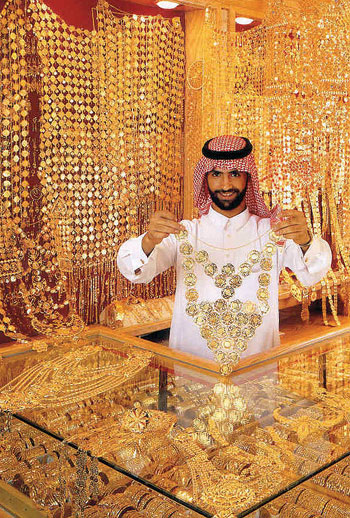Europe and America are often blamed for swaying Africans’ culture with their dress code, movies and money. However, the influence of other regions, like the Middle East with its Muslim faith, should never be underestimated either.A telling example is of the Arabs’ famous love for jewelry, which has notably been taken up by some Africans.


Europe and America are often blamed for swaying Africans’ culture with their dress code, movies and money. However, the influence of other regions, like the Middle East with its Muslim faith, should never be underestimated either.
A telling example is of the Arabs’ famous love for jewelry, which has notably been taken up by some Africans.
Natasha Mitali, a trader from Kigali Business Zone of Quartier Mateus, says that most of her loyal customers are Muslims.
"Most Muslim women will pay anything to get the fine earrings, wedding rings and bracelets,” she says.
Mitali also mentions perfumes and body mists as quite popular products in Africa—these have an Arabic origin.
In fashion, the Islamic dress code "Hijab” for women and "Shayaras” for men, dominate the Muslim suburb of Nyamirambo on prayer Fridays.
Devotee Muslims do not wait for Friday to dress like Arabs—they have fully adopted their dress code.
The checked scuffs which initially served as veils or cloaks for Arab men have now been channeled to style and are worn as a fashion craze.
Home furniture too is popular in the modern era. Even among modest Arabs, Persian rags are affordable. These thick woolen carpets are part of the long history of Iranian art and culture.
They spread this culture in Africa through the Muslim dominated areas, like Kenya’s coastal town of Mombasa.
"In Mombasa, most families sit on carpets, just like Arabs,” says Aldegonde Gihoza, a local first hand, hard ware importer.
"You find even guys with big houses more concerned with buying a pretty rag than chairs.”
She adds that lately, even Rwandan homes have shown interest in Persian rags, which are some of the commonest items in the annual Egyptian trade fair.
The Arabs have not sold the rag culture to Africa only, but also to Copa America and the Scandinavian.
The local language was not distant from this influence either. A telling example is on the Quaranic word, "Zwahama” to mean bad/ evil.
It was slot in Kigali urban slang after being commonly used the 2010, Eid fasting.
Before Zwahama, the word "Wallah”, which can literally be use as "I swear by God”, had been fed into local language by many people.
Some artists also added the Arabic spice into secular music, perhaps for praise, or just for show business.
American rapper Bursta Rhymes released "Arab Money” which praise the wealth of the East, and also had the wording "Al-hamdu-illai” over its chorus. Al-hamdu-illal, means "Praise be to God” in Arabic.
Local artist K8 Kavuyo might have derived a similar inspiration soon after, and he also recorded his crank single, also titled, Al-hamdu-illal.
Back in the early 2000s, Jamaican raga hit "Asalaam Alaikum,” became a mega dance floor mega, just like one of Micheal Jackson’s latest hits "Give thanks to Allah” attracted much debate on his faith.
Many other Arabs’ products, foodstuffs like the rice dish "Pillau” and smoking pipes have also been incorporated into modern culture.
Ends


